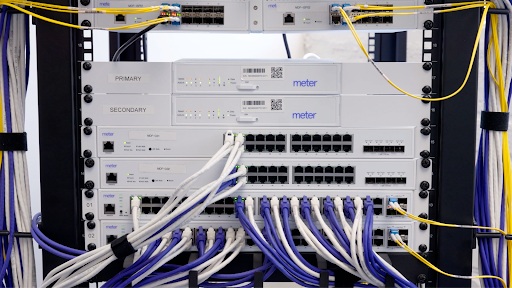A decade ago, Anil Varanasi had an idea to create a new type of networking vendor, where there was a unified stack and the whole offering was provided as a service. That was the founding vision for networking-as-a-service (NaaS) pioneer Meter.
It took five years of research to get the first products out the door. The next five years were spent on iterating and growing the technology. Now in 2025, Meter is set to advance further. Today the company announced a $170 million Series C round of funding to grow the technology for the next generation of networking requirements.
“Everybody that’s large in networking does hardware differently than how we would do it, does software differently than how we would do it, does delivery differently than how we would do it, does pricing differently than how we would do it,” Varanasi explained to Network World. “So we ourselves as customers, wanted to build something that we would use, and we would be delighted to use.”
Technical architecture: Custom OS with merchant silicon foundation
Meter isn’t providing generic white-box networking gear as a service, nor is it simply renting out other vendors’ technology and managing it. Rather, the company has built out its own hardware, software and protocols.
Meter built a purpose-built network operating system called Meter NOS that runs across all of its hardware components. The company wrote its own networking stack from scratch while leveraging proven merchant silicon from vendors like Marvel and Intel.
“A portion of our kernel is Linux for sure…we’re not gonna rewrite the underlying stuff,” Varanasi said. “But on top of that we get to do many different things.”
The architecture extends beyond traditional switching and routing. It encompasses power distribution units, security appliances, wireless access points and cellular connectivity under a single management plane. This integration enables custom protocols for inter-device communication across the entire infrastructure stack.
“We have something that’s our own secure protocol between all of this, on how data gets moved up and down,” he explained. “That includes something as simple as like, ‘oh, I want to go add a VLAN,’ and how do we actually traverse every single part of the stack, and that’s a full protocol that we’ve built on the back end.”
Meter’s NaaS deployment model
Meter was an early entrant in the NaaS space and has helped to define what the deployment model actually looks like for users. The company today competes against a host of other NaaS startup vendors including Nile, Join Digital and Ramen Networks, among others.
The way that Meter handles NaaS is it manages entire rack deployments including design, installation and ongoing management. The business model eliminates capital expenditures for customers through per-location, per-square-footage pricing.
“Our business model is zero capital cost, very marginal on the operating cost, and we will buy back all the existing hardware somebody has,” Varanasi said. “We will provide lifecycle management and hardware upgrades as part of our contract with the customer.”

Meter
While the equipment is all owned by Meter, Varanasi emphasized that customers retain full technical control despite the service model.
“Somebody can go down to a particular port on one of our switches and then decide, ‘oh, how do I actually want the STP [spanning tree priority] priority to be,’ or whatever they want,” he said.
AI integration: Custom models for network operations
As part of the company’s evolution in recent years, it has also gone deep on AI.
Meter developed proprietary machine learning models specifically for network management. The company’s “Command” product provides autonomous networking capabilities.
Meter partnered with Microsoft to scale compute resources for developing large-scale real-time models. This partnership focuses specifically on networking operations rather than adapting general-purpose AI models. The collaboration represents significant investment in domain-specific AI capabilities.
“We’re not using other people’s models, we built the model ourselves from the ground up,”Varanasi said.
Future development: Protocol innovation and hardware refresh
With the new funding, Varanasi plans on scaling operations, staffing and technology.
Varanasi said that Meter is working on significant protocol innovations addressing network congestion and latency challenges. These developments target problems particularly relevant as AI workloads stress traditional Ethernet architectures.
The company also plans a major hardware refresh for fall 2025. “We have hardware coming this fall that we hope is some of the best hardware ever built in the history of networking in the last 40 years, that really speaks to the Meter essence,” Varanasi said.
Meter at a glance
- Founded: 2015
- Funding: $255 million
- Investors: General Catalyst, J.P. Morgan, Microsoft, Sequoia Capital
- Headquarters: San Francisco, Calif.
- CEO: Anil Varanasi
- What they do: Networking-as-a-Service hardware and software.